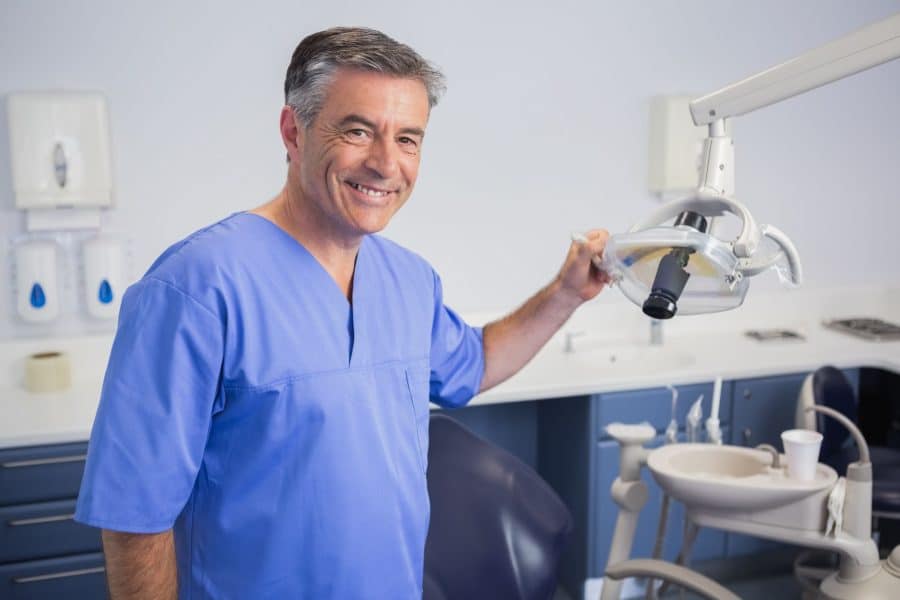When you visit the dentist, you expect a clean, safe environment—sterile tools, fresh gloves, and a professional team focused on your health. But have you ever thought about the water being used during your check-up or treatment?
That gentle spray from a dental tool might seem harmless, but if not properly maintained, it could carry bacteria—specifically Legionella. While the risk is low, responsible dental practices follow strict safety guidelines to make sure that the water they use is not just clean, but safe.
Let’s take a look at why this matters —and how dental teams are keeping you protected.
What Is Legionella?
Legionella is a naturally occurring bacterium found in freshwater, but it can become a health risk when it grows in man-made water systems, such as those found in dental chairs. If inhaled through fine mist or spray, Legionella can cause:
- Legionnaires’ disease – a severe lung infection similar to pneumonia
- Pontiac fever – a milder flu-like illness
According to the UK Health and Safety Executive (HSE), dental practices are legally required to manage the risk of Legionella under several regulations, including COSHH (Control of Substances Hazardous to Health), ACoP L8, and HSG274 Part 2.
Source: HSE – Legionella and water systems
Why This Matters in Dental Clinics
Dental tools like drills and water sprays rely on waterlines—thin plastic tubing that can harbour bacteria if not properly cleaned. These are known as Dental Unit Waterlines (DUWLs).
Because the tubing is narrow, water flow can be slow or stagnant between patients, allowing biofilm (a sticky layer of bacteria) to form. This biofilm can contain Legionella, which may be released during procedures.
Fact: According to the Centres for Disease Control and Prevention (CDC), bacteria levels in untreated dental waterlines can exceed safe drinking water standards by up to 10,000 times.
Source: CDC – Dental Unit Waterlines
How Dentists Keep You Safe: Regulations & Best Practices
Reputable dental clinics follow strict UK health and safety regulations to prevent Legionella growth and protect patients and staff.
Here’s what they do behind the scenes:
1. Legionella Risk Assessments (Required by Law)
Dental practices must carry out a risk assessment of their water systems in line with ACoP L8 (Approved Code of Practice) and HSG274 guidance. This helps them identify any areas where Legionella might grow.
- ACoP L8 sets out the legal duties for controlling Legionella under the Health and Safety at Work Act 1974.
- HSG274 Part 2 gives practical guidance for managing risks in hot and cold-water systems.
Under ACoP L8, all employers—including dental practices—must identify and assess sources of Legionella risk, implement control measures, and keep records.
Source: HSE – ACoP L8 (Legionnaires’ disease: The control of Legionella bacteria in water systems)
2. Flushing and Cleaning Waterlines
Practices are expected to flush waterlines at the start of each day and between patients. They also use disinfectants that break down biofilm and kill bacteria.
3. Routine Water Quality Testing
Water used during patient care should meet drinking water standards
4. Staff Training and Written Schemes of Control
Staff are trained to manage water hygiene, and practices are required to have a “written scheme of control”—a clear, step-by-step plan for keeping water systems safe and compliant.
What Can You Do as a Patient?
Most of this safety work happens behind the scenes, but if you’re curious or concerned, don’t be afraid to ask your dental practice questions like:
- “Do you test your dental waterlines regularly?”
- “How do you prevent bacteria like Legionella in your equipment?”
- “Are you compliant with ACoP L8 guidance?”
A trustworthy clinic will be more than happy to reassure you—they know it’s part of your right to feel safe.
Have There Been Real Cases?
In rare cases, waterline contamination has caused illness. One notable example is a case reported in The Lancet (2012), where an elderly patient in Italy died from Legionnaires’ disease traced back to a dental waterline.
DNA testing in that case confirmed that the Legionella found in the patient matched bacteria from the dental clinic’s waterlines.
Source: Ricci et al., The Lancet, 2012
While cases like this are extremely rare, they highlight why water safety procedures—and following ACoP L8 guidelines—are taken so seriously.
Your dental team is responsible for more than clean teeth—they’re also safeguarding your health in ways you might not see. Clean, safe water is one of those hidden layers of protection.
The next time you’re in the dental chair, know that proper infection control includes regular waterline cleaning, testing, and compliance with national regulations like ACoP L8 and COSHH. And if you ever want to know more—just ask!


